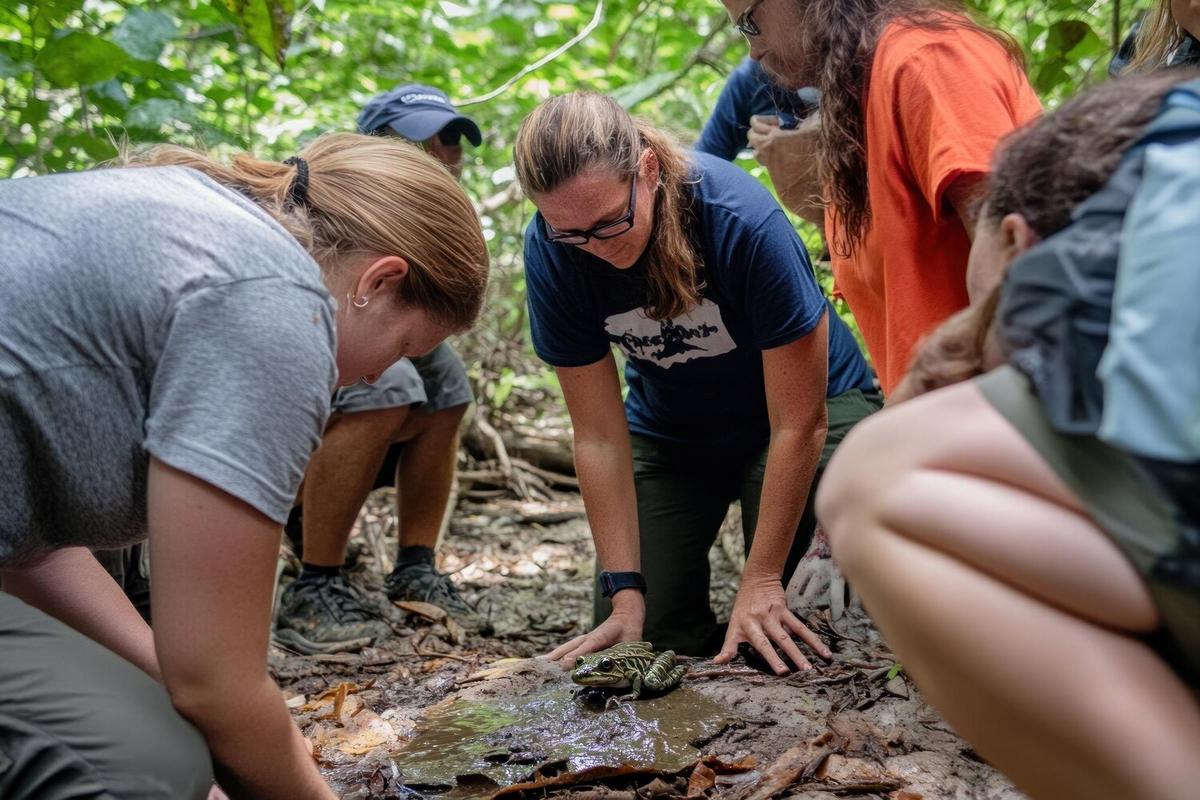Rewilding: A New Approach to Restoring Ecosystems
Rewilding, a revolutionary conservation strategy, is rapidly gaining attention as a means to restore ecosystems and enhance biodiversity. By allowing nature to take the lead, this approach aims to heal the planet’s landscapes and wildlife, offering a hopeful path forward in the face of environmental challenges.

Rewilding, a revolutionary conservation strategy, is rapidly gaining attention as a means to restore ecosystems and enhance biodiversity. By allowing nature to take the lead, this approach aims to heal the planet’s landscapes and wildlife, offering a hopeful path forward in the face of environmental challenges.
Understanding Rewilding
Rewilding is an innovative conservation method focused on restoring and protecting natural processes and core wilderness areas. It also involves reintroducing native species, particularly keystone species, that can transform ecosystems and help restore balance.
The Importance of Rewilding
Ecologist and author George Monbiot highlights rewilding as a way to “repair the living planet” and “restore ecological functions” that have been lost. Studies indicate that rewilding can lead to increased biodiversity, improved ecosystem services, and greater resilience to climate change.
Key Benefits
- Biodiversity Boost: Rewilding fosters a diverse range of species, which can lead to more resilient ecosystems.
- Climate Resilience: Healthy ecosystems can better withstand environmental stressors, aiding in climate adaptation.
- Economic Opportunities: Rewilding can spur ecotourism, offering local communities sustainable income sources.
Real-World Examples
In Europe, the return of the European bison and beavers to certain regions has shown promising results. These animals play crucial roles in shaping the landscape, from creating wetlands to maintaining grasslands, which in turn supports a diverse range of life.
Actionable Steps for Rewilding
- Start Locally: Engage in community initiatives to restore native plants and habitats.
- Support Policies: Advocate for legislation that prioritizes rewilding and biodiversity conservation.
- Educate Others: Raise awareness about the benefits of rewilding in your local area.
Rewilding: Challenges and Considerations
While rewilding offers numerous benefits, it also faces challenges such as land use conflicts and public perception issues. Successful rewilding requires collaboration among stakeholders, including governments, NGOs, and local communities.
| Challenge | Solution |
|---|---|
| Land Use Conflicts | Engage with local stakeholders to find mutually beneficial solutions. |
| Funding | Secure diverse funding sources, including public and private partnerships. |
| Public Perception | Promote awareness and education to shift public opinion. |
| Species Reintroduction | Ensure comprehensive studies and planning before reintroducing species. |
| Monitoring and Evaluation | Implement robust monitoring systems to track rewilding progress. |
| Policy Barriers | Advocate for supportive policies and regulations. |
| Climate Change | Incorporate climate resilience into rewilding plans. |
| Community Engagement | Foster inclusive participation in rewilding projects. |
Frequently Asked Questions
What is the main goal of rewilding?
The primary goal of rewilding is to restore natural processes and ecosystems, enhancing biodiversity and ecological resilience.
How does rewilding differ from traditional conservation?
Unlike traditional conservation, which often focuses on preserving specific species or habitats, rewilding emphasizes restoring entire ecosystems and natural processes.
Can rewilding help combat climate change?
Yes, rewilding can enhance biodiversity and ecosystem services, making environments more resilient to climate impacts.
Conclusion
Rewilding represents a promising path towards restoring ecosystems and revitalizing biodiversity. By embracing this approach, we can help create a more sustainable and resilient planet. Consider getting involved in local rewilding projects or supporting organizations that champion this cause. Together, we can make a significant impact on the health of our natural world.